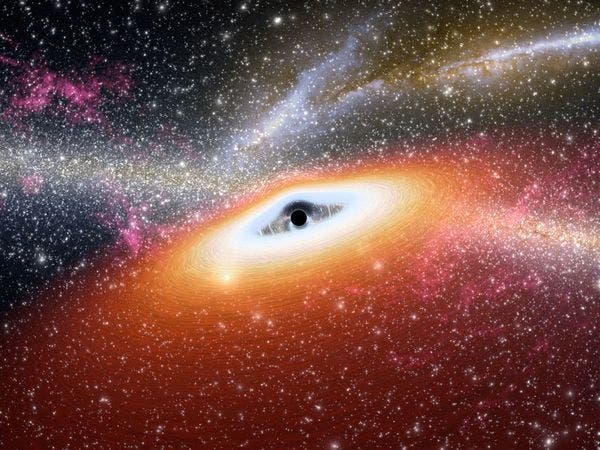Black holes are perhaps the most fascinating and staggering objects in the known Universe, and we are just now beginning to uncover their secrets. Dr. Sergei Nayakshin of the University of Leicester and his team found that doughnut-shaped dust shrouds that cover about half of supermassive black holes may very well be the result of high speed crashes between planets and asteroids.
Their observations indicated that about half of all supermassive black holes are obtured by these mysterious clouds, the origin of which is not yet truly understood. Supermassive black holes are the largest type of black holes, and it is believed that most, if not all galaxies have this type of black hole at their center. Their theory is supported by our own solar system, where the so-called zodiacal dust is known to form as a result of collisions between solid bodies, such as asteroids and comets. In order to complete their theory, researchers added that in addition to supermassive black holes, the centers of galaxies is also home to planets and asteroids.
“We suspect that the supermassive black hole in our own Galaxy, the Milky Way, expelled most of the gas that would otherwise turn into more stars and planets,” Nayakshin said.
“Understanding the origin of the dust in the inner regions of galaxies would take us one step closer to solving the mystery of the supermassive black holes,” he added.
The study has been published in the Monthly Notices of the Royal Astronomical Society.
Picture source







